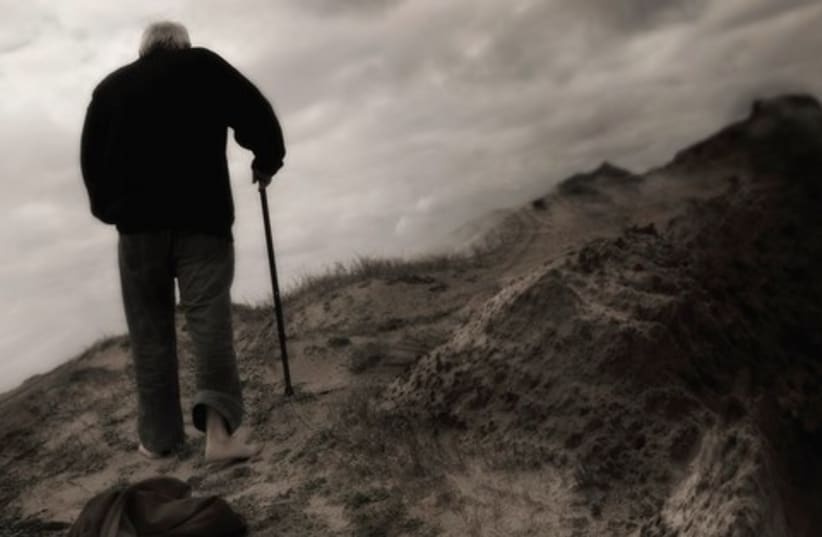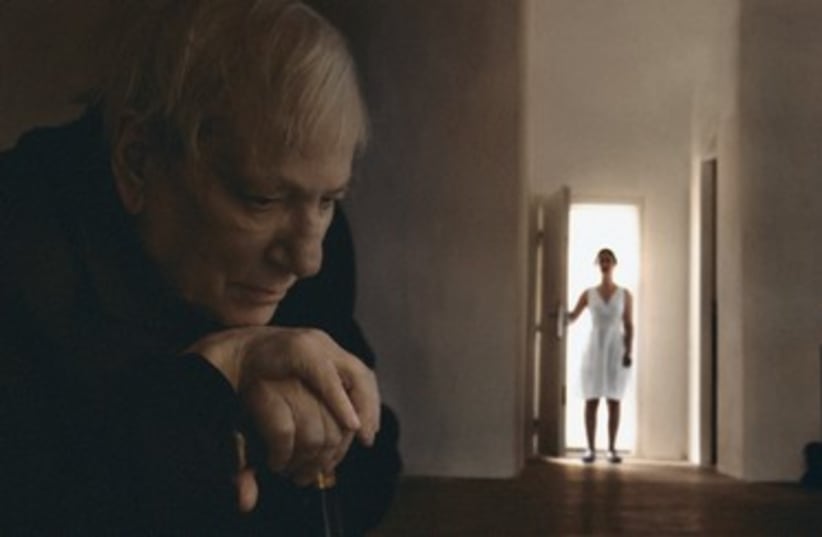
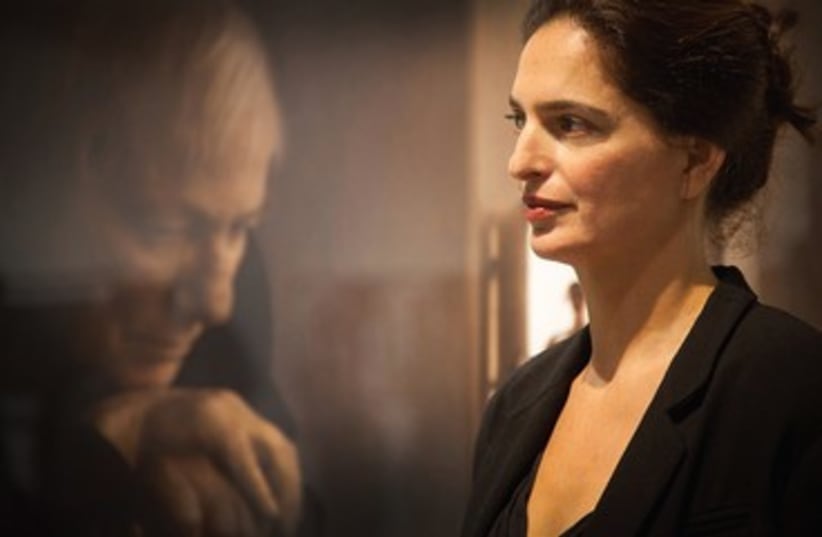
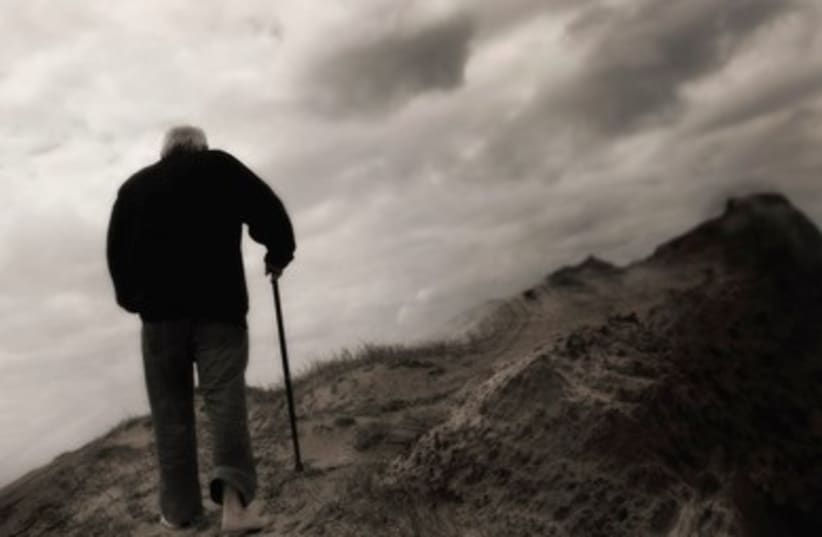
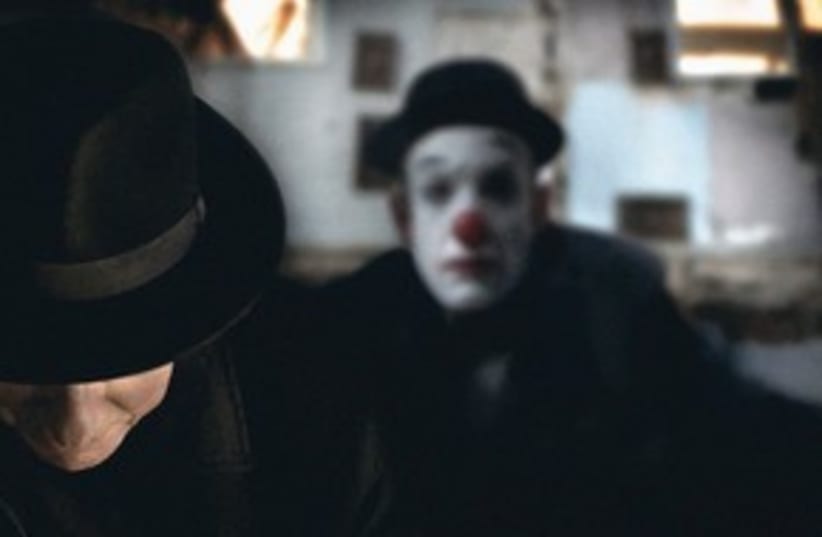
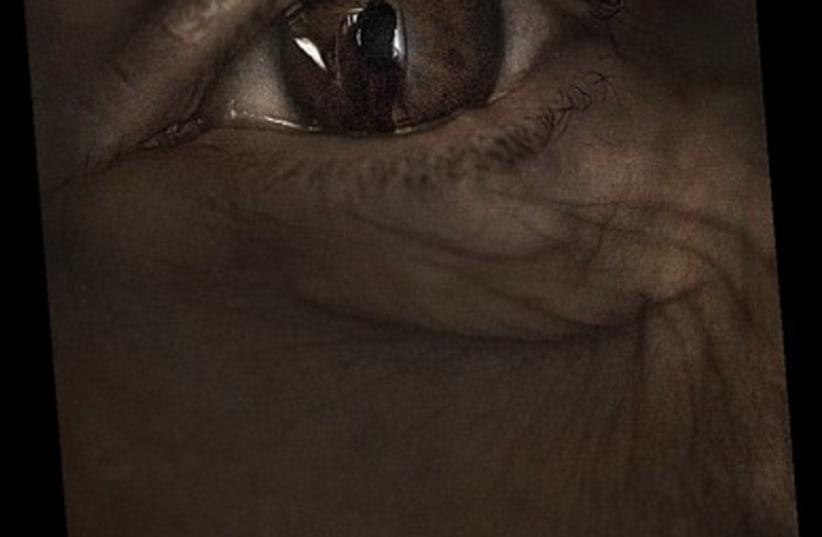

That’s because the show, “Entrance,” which is running at the Museum of Israeli Art in Ramat Gan, not only links to her previous exhibition, but also brought her into contact with one of the country’s most respected authors, 82-year-old Yoram Kaniuk.“I was at the end of my last project, which was called ‘In the Darkrooms,’ in which I took pictures of Israeli women novelists and poets. Yoram had finished his previous book, 1948, and he didn’t know what he was going to do next, just like me. He had seen the [published book that collected the photos] of ‘In the Darkrooms’ and contacted me, and we met.”They immediately found plenty of common ground.“Yoram is also a painter, and he approaches art in a visual sense. And that’s my approach, too,” she says. “Of course, I had just done the project on writers, and I feel a bond with that, too. I feel I photograph inner worlds, and they describe them in words. I also like projects that involve a mix of different artistic disciplines.”The probing of emotional and subconscious layers comes through loud and clear in “Entrance.” The photographs that feature Kaniuk are imbued with a clear sense of a senior citizen reflecting on his long life to date, and some of the romantic encounters he experienced along the road. Possibly the most stirring of the prints is one in which Kaniuk is visible from the back, climbing a sharp-ridged mound of earth, barefoot and walking stick in hand, with his discarded hat, coat, socks and shoes in a trail behind him.It is the picture that will appear on the front of Kaniuk’s new book, Ba Beyamim, which is due to be published in January and, when translated into English, will probably go by the name of Almost (An Old Man).The shot brought photographer and subject closer together as people.“When we got to the location, I told Yoram he had to take his socks and shoes off,” says Nesher, “but Yoram said he couldn’t take them off himself, and I’d have to do it for him. So I did.It was a very intimate moment for both of us. We have been good friends ever since. Yoram liked the photograph a lot.”Nesher feels that the fact that Kaniuk’s face is not visible in the frame is not detrimental to the final effect; quite the contrary: “This is a portrait that says so much about Yoram, from his back. Sometimes you get so much emotion and power and subtext, particularly when you don’t see the subject’s face.”When Kaniuk first met Nesher, the book was not even a twinkle in his eye.“I had no idea I would write the book back when I met Iris,” he says.“It is funny that the idea for the cover came before the actual book. This is the last book I will write.”Nesher owns up to harboring another motive for “Entrance,” though.“With the increased popularity of Kindle, book covers are slowly but surely disappearing,” she notes sadly.“I want to try to keep that art alive.”She also bemoans the passing of LP cover design, and cites British record sleeve designer Vaughan Oliver’s work for the London-based 4AD record label as a source of inspiration.“Entrance” gradually began to take shape as Nesher and Kaniuk began to meet up and chat on a regular basis.“All sorts of topics came up between us,” she recalls. “There were things that really interested me, like relationships between men and women, fathers and daughters, home, place, homeland. I like to start with a practical subject and then take that into all sorts of artistic directions.”The pragmatic element that evolved was the yet-to-be-filled book cover.Once the subject was agreed upon, Nesher got straight down to work. As a former sculptor, she employs a multi-pronged strategy.“I always make sketches of what I am going to photograph,” she says. “I think my background in sculpting channels me into a space where it is difficult to change things that you have created, so I like to plan things well before I take my pictures.”That certainly appealed to Kaniuk.“It wasn’t like having my photograph taken at all,” he says. “Iris planned everything so meticulously, like an acrobat chartering a loop de loop. She plans like an architect and photographs like an artist. Each time it was like stepping into a painting. I only completed the picture.”THERE IS an incredible symmetry, and sense of closure and balance, all through Nesher’s project – none of it intentional. Besides the exhibition that preceded the book, the photographer’s confluence with Kaniuk offered the octogenarian a last opportunity to catch a glimpse of a beloved childhood haunt. One of the pictures shows him standing in a vacant building site, between two massive walls of a building that has been demolished.The site was on Hess Street in Tel Aviv, where Nesher then worked.“I discovered that Iris’s studio was right opposite where my grandmother lived from 1919,” says Kaniuk. “I grew up there for a good few years.” Shortly after that, the bulldozers moved in and Grandma Mira Braverman’s home was obliterated. “Iris took a picture of me near where my room once was, after they knocked the building down. I’m glad I had the chance to see the house one more time.”The first photograph Nesher took was the one that will appear on the dust jacket of Ba Beyamim. She says she got the inspiration for the picture composition from some bygone police techniques.“Yoram’s book is about a painter who makes pictures of people immediately after they die. One day I saw a documentary about police photographers who used to take photos of dead bodies, at murder scenes in New York, in the 1920s. They weren’t professional photographers, but there were some amazing pictures in there.You’d see the legs of the camera tripod, and all sorts of personal effects of the deceased scattered around, and there was a sense of something left over from the person’s life. That gave me the idea for leaving his things strewn on the ground behind him in the photograph.”There is more closure in “Entrance.”Kaniuk shares some of the frames with a young woman, who appears both naked and fully clothed, and who has a connection to a powerful experience in the author’s life.Kaniuk is fighting cancer – his third bout with the disease. He underwent a difficult operation in 2005 and was in a coma for a few days. The doctors gave up hope, but somehow the patient came through.“The last thing I saw before I went under for the operation was the surgeon’s eyes,” recalls the writer. “I saw those same eyes again when I went to see a film called Yamim Kfu’im (Frozen Days), sometime after that operation.”One of the characters in the movie was played by Anat Klausner, the surgeon’s daughter – who is the woman in Nesher’s “Entrance” works.Klausner’s father, Yosef, was Nesher’s father’s surgeon when he underwent an operation for the same kind of cancer as Kaniuk’s.“Yes, there are lots of connections in this project,” Nesher observes.Love also comes into the equation, albeit in a more indirect manner.“I wanted to examine relationships between men and women, and Yoram told me the story of his first love, when he met a woman who was older than him, on Ben-Yehuda Street in Tel Aviv, and they went to a hotel – the Excelsior Hotel – where Yoram lost his virginity,” she recounts.Kaniuk relates the episode in 1948.“The following morning, he went one way up the street and she went the other, and it was only after a few minutes that Yoram realized he knew almost nothing about her,” continues Nesher.“The building of my old studio on Hess Street was a hotel in the 1920s, and I wondered about the things that went on there, like at the Excelsior. You know, at the time, maybe the hotel and Yoram’s grandmother’s house may have been the only two buildings on the street.”WHILE NESHER says she was delighted to work with Kaniuk, she adds that the synergy brought its challenges: “It is hard for an artist to see himself as such. When you work with another artist, the way the artist sees you is another way to see yourself. In art, to a degree, anyone you write about or portray in some other way, is who you are.”She addresses this tricky subject by showing herself, in miniature, taking Kaniuk’s photograph, her own reflection in his eye.While the prints in “Entrance” are all full-color, there is a monochromic look to them.“I have a strong penchant for blackand- white photography,” Nesher concurs.“There is so much drama in black and white. Almost all my clothes are black, too. When I studied at the School of Visual Arts in New York and I gave in some work, my teacher called me ‘Dark Drama.’ Even when I photograph in color, I do desaturation of the colors, and leave them almost without color and leave [it] as close as possible to black and white.”There are a couple of strongly lit pictures in the show, too, and they appear blanched. One is of a girl in a white dress on a sun-drenched balcony.“That is from a series I did about mother-daughter relationships,” says the photographer. “I examined relationships between my generation and that of our parents, which was a generation of emotionally detached people.In that photograph I was looking for the remote, the coldness, the place of expectation.”There is also a recurring image of a chair in several of the pictures.“To begin with, I thought the model would sit on the chair, but she suggested we leave it empty. I liked the idea. I connected with all the elements of emptiness and detachment in the photographs,” Nesher muses.At the end of the day, “Entrance” is a feast for the eyes and the soul. The no-holds-barred and finely crafted photographs convey a feeling of sumptuous textures, like the finest Belgian chocolate rippling with delectable, velvety flavors, and shot through with a pervading sense of romanticism.“Entrance” closes on December 15. For more information: (03) 752-1876 and www.m-i-a.co.il
